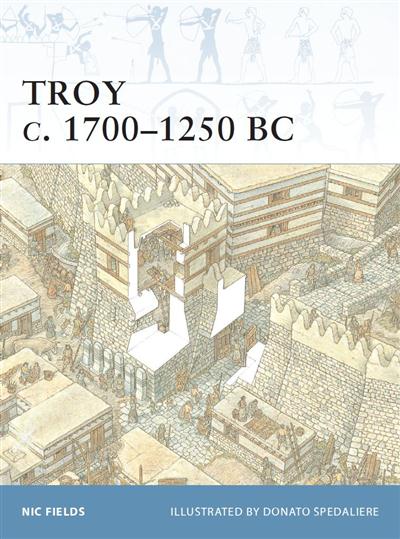Walls of Troy VI
 Osprey’s Fortress book on ancient Troy is not a bad guide to the history of the site as known to archaeology as a whole, but the bulk of the book concentrates (understandably) on Troy VIh, which is one of the contenders to be the Troy of the Illiad (there are arguments for VIIa). It also has the most well-developed defenses.
Osprey’s Fortress book on ancient Troy is not a bad guide to the history of the site as known to archaeology as a whole, but the bulk of the book concentrates (understandably) on Troy VIh, which is one of the contenders to be the Troy of the Illiad (there are arguments for VIIa). It also has the most well-developed defenses.
Beyond a few pages introducing archaeological periods, and the history of excavations of the site, there is a nice color diagram of the major features of each level of the city showing how it grew over time, and a 12-page history of the city from 2900 BC to 550 AD. I should say in the previous sentence, how the central fortress of Troy grew, since it has now been established that there was a walled lower town, at least during the Troy VI period, typical of major fortresses.
After a five-page digression on techniques of mud-brick building (the stone lower walls of Troy had mud-brick upper sections), book gets into its main focus on the walls of Troy IV, with an emphasis on the later portions of the period. Various towers and gates have technical names for archaeologists to identify them by (such as Gate VIT), but no diagram of these elements is provided, and would have made things much clearer. As usual with Osprey, there are some very good photos of various elements, that also show some of the unusual features of Troy’s fortifications. The color illustrations also do a great job with reconstructions of the city, and cut away views, but are curiously washed out with low contrast (the cover has much higher contrast than the full illustration when shown on page 39, and is much easier to read because of it).
The last parts of the book deal with evidence that the Myceneans were indeed involved in plundering the shores of Anatolia (as well as other places), and spends a few pages pondering interpretations of the Trojan Horse, including possibly as an actual siege engine. While the discussion was interesting, there just is too little known for it to be more than speculation.
In general, this is a typical interesting Osprey look at an interesting subject, but I think the color illustrations desperately need another pass through the art department to get the color balance and contrast fixed, and some of the subsidiary material could have been dropped for a detailed layout of Troy VI, both of which leave the book a little lacking.

Discussion ¬